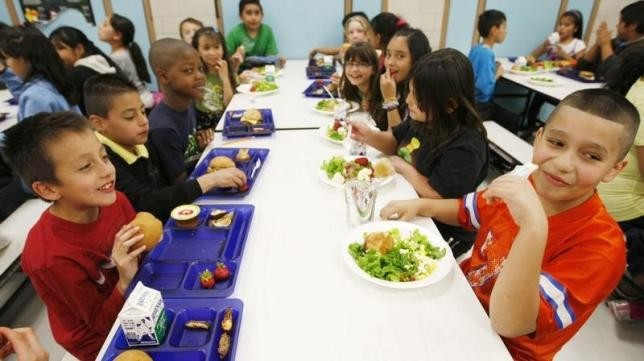United States officials from the Centers for Disease Control and Prevention (CDC) reported on August 27, Thursday, that public school lunches are improving children's health. The CDC discovered that the meals in school cafeterias contain less sodium, have more fruits and vegetables, and are more likely to include whole grains such as oatmeal, wheat bread, corn kernels, and brown rice.
Caitlin Merlo led the CDC team, which examined surveys conducted at public schools in 2000, 2006, 2014. Their objective was to learn if policies of the U.S.'s Department of Agriculture were improving the nutritional value of meals served by lunchrooms.
Over 97 percent of all schools offered a whole grain at breakfast in 2014. The figure of 94 percent was slightly lower at lunchtime.
Meanwhile, almost 80 percent of schools daily offered at least two vegetables. CDC reported that 78 percent of the schools had at least two fruit options, according to NBC News.
However, not all the news was good. A little over half the schools had switched from salty canned vegetables to low-salt choices, and less than one-third of them had installed self-service salad bars.
CDC researchers highlighted the importance of healthy school lunches. That was due to most U.S. youth not consuming enough fruits, veggies, and whole grains. They cause higher risks of becoming overweight or obese, and acquiring diseases such as diabetes.
A high sodium diet is also a major problem. About 90 percent of U.S. kids consume too much salt.
Another published study this week revealed that school students might not be eating the healthier meals. University of Vermont research learned that kids throw away many fruits and vegetables, and more when they are eating them is a requirement.
In fact, when students had to select more fruits and veggies due to a mandate, they ate a little less of each. In addition, waste increased about 56 percent. Researchers used digital imaging to examine students' lunch trays before they entered the line, and after they exited it, according to Southwest Florida Online.
The researchers learned that pre-packaged fruits and vegetables encouraged youngsters to choose more of them for lunch. That included fruit cups and packs of baby carrots, for example.
This video shows the U.S. First Lady announcing healthier school meals:



























